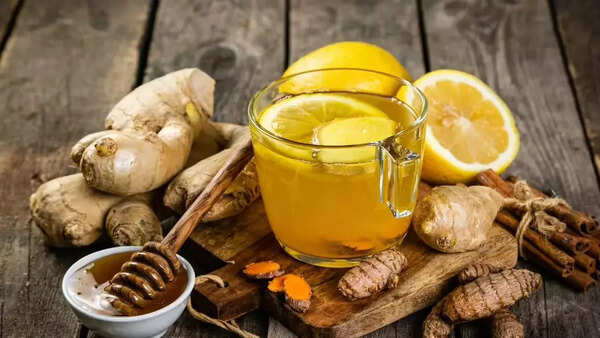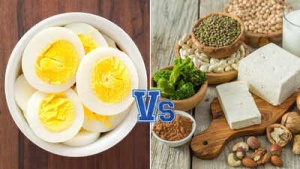Menstrual cramps can significantly disrupt daily life, causing pain and fatigue. While conventional methods like hot water bags and pain relievers offer temporary relief, many women seek long-term, natural solutions. For centuries, herbal teas have been a trusted remedy for easing menstrual discomfort. Here are five ancient herbal teas known for their pain-relieving properties:


Brew red raspberry leaf tea to alleviate menstrual cramps. This tea, made from raspberry plant leaves, doesn't taste like raspberries but has a mild flavor similar to black tea. It contains fragarine, a compound thought to strengthen pelvic muscles and reduce uterine spasms, thereby helping with menstrual pain. Prepare it by steeping 1–2 teaspoons of dried leaves in hot water for 10 minutes.

Chamomile tea has been a popular choice since ancient Egypt and Rome for its calming effects. It's a go-to for menstrual relief due to its anti-inflammatory and antispasmodic compounds, such as apigenin, which help relax muscles and reduce cramping. While it may not directly affect cramps, chamomile tea can improve sleep and reduce fatigue. The antioxidants present may also help reduce inflammation.

Used since ancient Greece, peppermint tea offers relief from menstrual cramps. It contains menthol, a natural muscle relaxant that can soothe uterine contractions and ease cramps. A 2019 study indicated that menthol in peppermint oil can smooth muscle spasms, reducing painful stomach cramps. To make this tea, steep 1 teaspoon of dried peppermint leaves in hot water for 5–10 minutes. Peppermint tea can also improve digestion and reduce bloating.

Cinnamon tea can satisfy sweet cravings during menstruation while easing pain. Its naturally sweet and spicy flavor provides a comforting and relaxing drink. A staple in ancient Chinese and Ayurvedic medicine, cinnamon has anti-inflammatory and circulation-boosting properties. These help reduce menstrual pain by improving blood flow and relaxing uterine muscles. A 2020 study showed that cinnamon supplementation can reduce inflammation and oxidative stress levels. Consume in moderation to avoid overstimulation.

Ginger tea is a reliable choice. Used for ages in Asian and Indian healing practices, ginger boasts potent anti-inflammatory properties. This spicy root contains gingerol, which may reduce prostaglandin levels that trigger menstrual cramps. A 2015 study found that women who consumed 750-2000 mg of ginger powder during the first 3-4 days of their period experienced reduced pain.
Disclaimer: This article serves informational purposes only and is not a substitute for professional medical advice, diagnosis, or treatment. Always consult a healthcare provider before starting any new dietary or herbal remedy, especially if you are pregnant, nursing, taking medications, or have existing health conditions.
Newer articles
Older articles
 Bangladesh Test Captain Najmul Hossain Shanto Resigns After Sri Lanka Series Defeat
Bangladesh Test Captain Najmul Hossain Shanto Resigns After Sri Lanka Series Defeat
 SA20 Auction: Teams Can Retain Up to Six Players as Salary Cap Jumps to $2.3 Million
SA20 Auction: Teams Can Retain Up to Six Players as Salary Cap Jumps to $2.3 Million
 Android Users Urged to Patch Now: Critical Security Flaws Expose Devices to Attacks
Android Users Urged to Patch Now: Critical Security Flaws Expose Devices to Attacks
 X Cracks Down: Over Half a Million Accounts Suspended in India for Policy Breaches
X Cracks Down: Over Half a Million Accounts Suspended in India for Policy Breaches
 What Your Phone Grip Says About You: A Personality Test
What Your Phone Grip Says About You: A Personality Test
 India's Squad Trimmed: Pacer Released Ahead of Second Test Against England in Birmingham
India's Squad Trimmed: Pacer Released Ahead of Second Test Against England in Birmingham
 Vegetarian Power: 20 Plant-Based Protein Sources That Outperform Eggs
Vegetarian Power: 20 Plant-Based Protein Sources That Outperform Eggs
 ICC Test Rankings: Pant Hits Career High, Bumrah Stays on Top, Root Leads Batters
ICC Test Rankings: Pant Hits Career High, Bumrah Stays on Top, Root Leads Batters
 Rishabh Pant Redefining Cricket: Greg Chappell Hails Wicketkeeper-Batter's Revolutionary Impact
Rishabh Pant Redefining Cricket: Greg Chappell Hails Wicketkeeper-Batter's Revolutionary Impact
 India's Fielding Woes and Top Order Collapse Blamed for First Test Defeat Against England: Former Selector Weighs In
India's Fielding Woes and Top Order Collapse Blamed for First Test Defeat Against England: Former Selector Weighs In